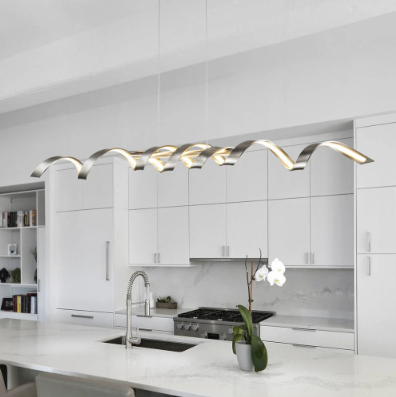Lighting is a critical element in hotel room design, significantly impacting guest experience, comfort, and functionality. Proper illumination enhances room aesthetics, accentuates features, and provides adequate light for various activities. Conversely, inadequate lighting can result in discomfort, eye strain, and an unsatisfactory environment.
Hotel room lighting Hoognu serves multiple purposes, including task lighting for reading and working, ambient lighting for relaxation, and accent lighting to highlight architectural elements. The lighting design should harmonize with the room’s decor and architecture, creating a cohesive and welcoming space. Effective lighting is essential for guest satisfaction and comfort, as well as for enhancing the room’s overall aesthetic appeal.
It also plays a crucial role in energy efficiency and sustainability within the hospitality industry. By implementing energy-efficient lighting solutions, hotels can reduce their environmental impact and operational costs while maintaining a pleasant atmosphere for guests. The balance between functionality, aesthetics, and sustainability in lighting design is fundamental to modern hotel room management and guest experience optimization.
Types of Lighting Fixtures
General Illumination
Ceiling-mounted fixtures such as chandeliers, flush mounts, and recessed lights are commonly used to provide general illumination throughout the room. These fixtures can be complemented with wall sconces or pendant lights to add visual interest and create a layered lighting scheme.
Task Lighting
Table lamps and floor lamps are essential for providing task lighting in specific areas such as bedside tables, desks, or seating areas. These fixtures not only offer focused illumination for activities like reading or working but also contribute to the room’s overall decor and ambiance.
Accent Lighting and Modern Touches
In recent years, LED strip lights have become popular for adding a modern touch to hotel room design. These versatile lights can be used to create indirect or accent lighting, highlighting architectural details or creating a soft glow along surfaces such as headboards or behind mirrors. Additionally, track lighting and adjustable spotlights can be used to highlight artwork, architectural features, or decorative elements within the room, adding depth and visual appeal. Overall, the combination of different lighting fixtures allows hoteliers to create a well-balanced and versatile lighting design that meets the diverse needs of their guests.
Choosing the Right Bulbs
Selecting the right bulbs is crucial for achieving the desired lighting quality and energy efficiency in hotel rooms. LED bulbs have become the preferred choice for hotel lighting due to their long lifespan, energy efficiency, and versatility in color temperature and dimmability. LED bulbs come in various color temperatures ranging from warm white to cool white, allowing hoteliers to create different moods and atmospheres within the room.
For general illumination, it is recommended to use LED bulbs with a color temperature of around 2700-3000K, which provides a warm and inviting light that is suitable for most hotel room settings. For task lighting in areas such as desks or reading nooks, LED bulbs with a color temperature of 3500-4000K can provide a brighter and more focused light that enhances visibility and productivity. Additionally, dimmable LED bulbs offer flexibility in adjusting the light levels according to the time of day or specific activities.
In terms of energy efficiency, LED bulbs consume significantly less energy than traditional incandescent or fluorescent bulbs, resulting in lower operational costs for hotels. Furthermore, LED bulbs produce less heat, reducing the load on air conditioning systems and contributing to overall energy savings. By choosing the right LED bulbs for hotel room lighting, hoteliers can create a comfortable and sustainable environment for their guests while optimizing energy usage.
Setting the Mood with Dimmers
Dimmer switches are an essential tool for controlling the intensity of light in hotel rooms and setting the desired mood for different activities and times of day. By installing dimmers for overhead lights, wall sconces, and other fixtures, hoteliers can offer guests the flexibility to adjust the lighting levels according to their preferences. Dimmers also contribute to energy savings by allowing lights to operate at lower power levels when full brightness is not required.
In the evening, dimming the lights can create a cozy and relaxing atmosphere that encourages rest and relaxation. This is particularly important for hotel rooms, where guests seek comfort and tranquility after a long day of travel or work. Dimmed lighting can also enhance the ambiance during special occasions such as romantic getaways or celebrations, allowing guests to customize their experience and create memorable moments during their stay.
From a practical standpoint, dimmers provide functional benefits by allowing guests to adjust the lighting for specific tasks such as reading or working without causing glare or discomfort. This level of control over the lighting environment contributes to guest satisfaction and comfort, ultimately enhancing their overall experience at the hotel. Overall, dimmer switches are an indispensable feature for hotel room lighting design, offering both aesthetic and functional advantages for guests and hoteliers alike.
Utilizing Task Lighting
Task lighting is essential for providing focused illumination in specific areas where activities such as reading, working, or grooming take place. In hotel rooms, bedside table lamps are a common form of task lighting that offers convenience and functionality for guests. These lamps should be positioned at an appropriate height and angle to provide comfortable light for reading without causing glare or shadows.
In addition to bedside table lamps, desk lamps are important for business travelers who may need to work during their stay. These lamps should offer adjustable arms or heads to direct light where it is needed most, providing optimal visibility and reducing eye strain. Task lighting in bathroom vanities is also crucial for grooming activities such as shaving or applying makeup, requiring bright and even illumination that minimizes shadows.
When selecting task lighting fixtures for hotel rooms, it is important to consider factors such as style, size, and adjustability to ensure they complement the room’s decor while meeting functional requirements. LED bulbs are ideal for task lighting due to their energy efficiency and ability to produce bright, focused light without generating excessive heat. By strategically placing task lighting fixtures in key areas of the room, hoteliers can enhance guest comfort and convenience while contributing to a well-rounded lighting design.
Incorporating Accent Lighting
Methods of Incorporating Accent Lighting
One popular method of incorporating accent lighting is through the use of LED strip lights or tape lights. These flexible light sources can be discreetly installed along surfaces such as headboards, behind mirrors, or within coves to create a soft glow that adds warmth and dimension to the room. Additionally, adjustable spotlights or track lights can be used to direct focused beams onto specific objects or areas, creating dramatic effects and visual focal points.
Color Temperature and Ambiance
In terms of color temperature, accent lighting can benefit from warmer tones (around 2700-3000K) to create a cozy and inviting ambiance that complements general illumination. The strategic placement of accent lighting fixtures allows hoteliers to guide guests’ attention towards key elements within the room while adding a touch of sophistication and elegance to the overall design.
Elevating the Guest Experience
By incorporating accent lighting into hotel room interiors, hoteliers can elevate the guest experience by creating a visually captivating and memorable environment.
Creating a Relaxing Atmosphere with Color Temperature
The color temperature of light plays a significant role in shaping the mood and atmosphere of a hotel room. Warm white light (around 2700-3000K) creates a cozy and inviting ambiance that promotes relaxation and comfort. This color temperature is ideal for general illumination in bedrooms and living areas where guests spend time unwinding and resting.
Warm white light also enhances the warmth of wood finishes, textiles, and other natural materials commonly found in hotel room decor. On the other hand, cool white light (around 3500-4000K) offers a brighter and more energizing quality that is suitable for task-oriented areas such as desks or reading nooks. This color temperature promotes alertness and productivity by providing clear visibility without causing eye strain or discomfort.
In bathrooms, cool white light can contribute to a fresh and clean atmosphere that complements grooming activities such as showering or getting ready. By strategically combining warm white and cool white light sources within a hotel room, hoteliers can create a balanced lighting design that caters to different activities and times of day. Dimmable LED bulbs with adjustable color temperature offer even greater flexibility in customizing the lighting environment according to guest preferences.
Overall, color temperature is a powerful tool for shaping the overall mood and ambiance of a hotel room, contributing to guest comfort and satisfaction during their stay. In conclusion, hotel room lighting is a critical element that significantly impacts guest experience, comfort, and overall satisfaction. By carefully selecting lighting fixtures, bulbs, dimmers, task lighting elements, accent lighting features, and color temperatures that complement each other while meeting functional requirements, hoteliers can create an inviting atmosphere that enhances guest comfort while contributing to energy efficiency and sustainability efforts within the hospitality industry.




